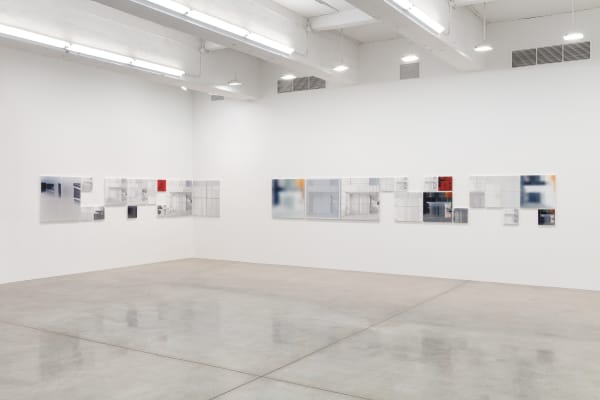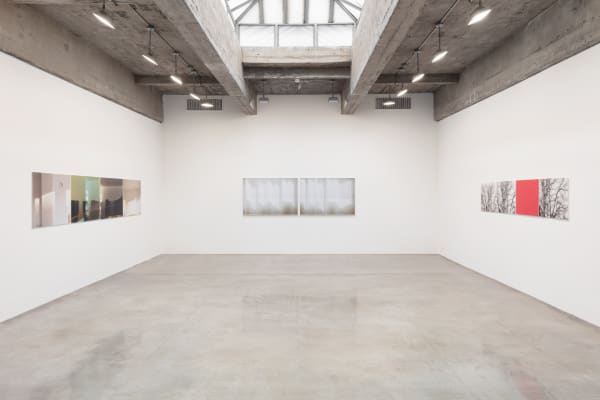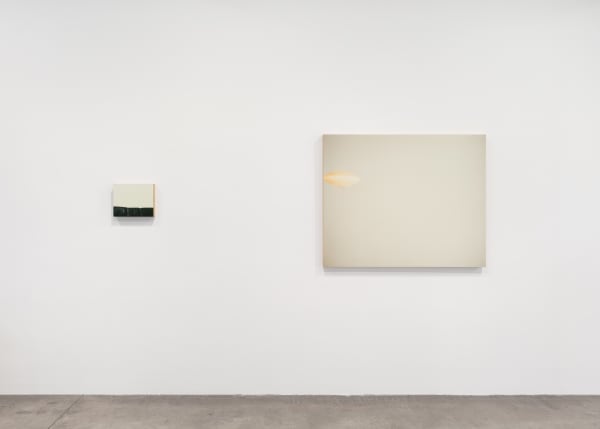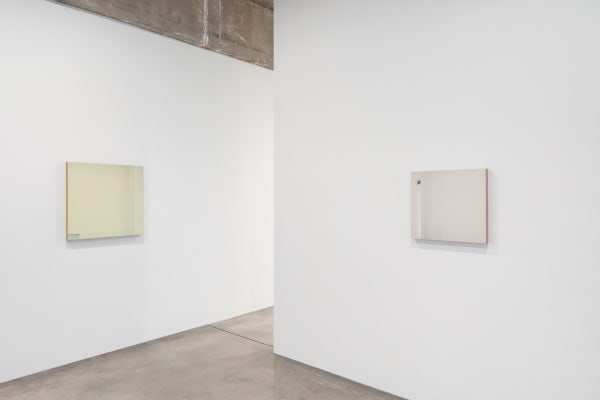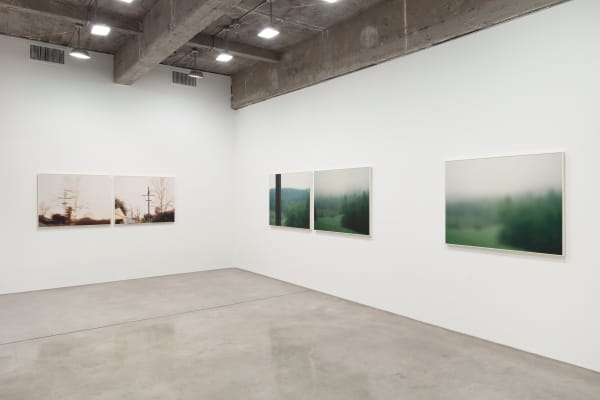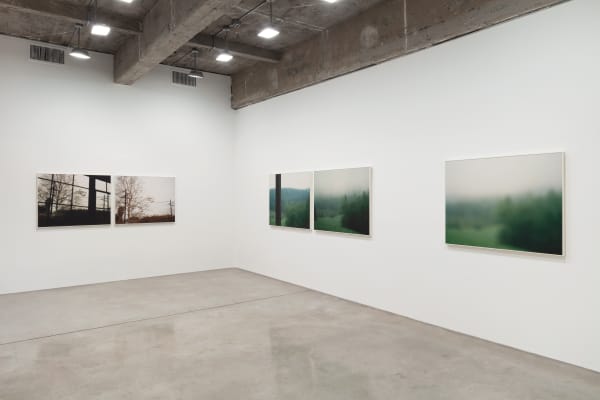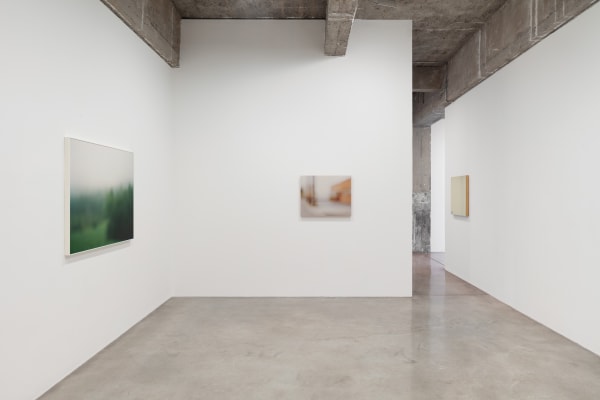Uta Barth: Tanya Bonakdar Gallery, New York
Tanya Bonakdar Gallery is pleased to present its twelfth solo exhibition of work by Uta Barth. In celebration of both past and present, this exhibition is in two parts. The ground floor gallery space features the New York debut of Barth’s most recent work, …from dawn to dusk. A nearly 360-degree installation of images, this project was commissioned by the J. Paul Getty Trust and was featured as part of Barth’s recent major survey exhibition, Uta Barth: Peripheral Vision, at the Getty Museum. In the upstairs galleries, a very special survey includes works shown in exhibitions the artist has presented at the gallery since 1995. This presentation was selected by Elizabeth Smith, currently executive director of the Helen Frankenthaler Foundation, and curator of Barth’s seminal 1995 solo exhibition at MOCA, Los Angeles. A decades-long collaboration between the artist and gallerist began that same year with the very first solo exhibition held at Tanya Bonakdar Gallery’s Prince Street Space. As the gallery approaches its 30th anniversary, we celebrate the long-term relationships we have been able to foster, and the accolades and achievements Uta Barth has earned. We are excited to bring these elements of Uta Barth’s history together with her most recent work.
Barth’s expansive 2022 series … from dawn to dusk focuses on the intersection of Southern California light with the architecture of the Getty Center. It traces the changing light at one location of the Richard Meier built campus, for the period of one year. The location was photographed every five minutes, from dawn to dusk, on two days each month, for the entirety of the year. Made with a GigaPan, over 64,000 images were captured and a Timelapse video sequence now shows the progression of this movement of light. As the view repeats from panel to panel, there are subtle changes in light as well as more dramatic blurring and color shifts, which invoke inverted optical afterimages and other visual phenomena that occur when staring at a fixed point for a prolonged period of time. Presented as twelve consecutive single views, the video is embedded among the still images of the installation, and it comes as a surprise to discover what one first assumes to be a still photograph to actually be the moving summation of the show.
In the upstairs galleries, Elizabeth Smith’s selection of work reveals the foundations of the artist’s renowned and influential practice, as well as the trajectory that led to the explorations found in …from dawn to dusk. Elizabeth Smith shared her thoughts on Barth’s practice as she approached this exhibition:
It’s been almost thirty years since I worked with Uta Barth to present her first solo museum show at MOCA in 1995. In relation to her newest project, the gallery’s invitation to select some key examples from both her early series and subsequent ones has offered a welcome opportunity to reengage with and consider the full trajectory of her work. From her earliest to her most recent photographs, Barth’s practice has centered on a nuanced investigation of visual experience, free from narrative. Light, color, the passage of time, and the shifting nature of the process of vision through bodily experience are the ongoing subjects of her resonant images, probed in various ways over decades.
Throughout her career, Uta Barth has made visual perception the subject of her work. Regarded for her “empty” images that reference painterly abstraction, the artist carefully renders blurred backgrounds, cropped frames and the natural qualities of light to capture incidental and fleeting moments, those which exist almost exclusively within our periphery. With a deliberate disregard for both the conventional photographic subject and the point-and-shoot role of the camera, Barth’s work delicately deconstructs conventions of visual representation by calling our attention to the limits of the human eye.
As Leah Ollman writes in her recent Los Angeles Times profile of the artist,
From her earliest years as an artist, Barth’s attention has been drawn to the eye’s behavior: what attracts it, what makes it stay, what causes it to double back, what generates after-images and optical fatigue. Learning to photograph was, for her, a way of learning to see.
Born in Berlin in 1958, Uta Barth moved to California as a child and now lives and works in Los Angeles. She has received numerous awards and accolades, including a MacArthur Foundation Fellowship (2012), Guggenheim Fellowship (2004–5) and the National Endowment for the Arts Fellowship (1990–1 and 1994–5). In addition to her own practice, she has taught several generations of artists, having served on the faculty of UC Riverside since the 1990s and having also taught in the graduate departments of UCLA and of ArtCenter College of Design. Since her 1995 exhibition at The Museum of Contemporary Art, Los Angeles, also curated by Elizabeth Smith, Barth has presented many solo institutional shows, including at the Henry Art Gallery, Seattle (2000), SITE Santa Fe (2005), The Art Institute of Chicago (2011), SCAD Museum of Art, Savannah (2013), and the Getty Center, Los Angeles (2022). Her work is held in many prominent public collections, including the Baltimore Museum of art; The Carnegie Museum of Art, Pittsburgh; Dallas Museum of Art; The Hammer Museum, Los Angeles; The Israel Museum, Jerusalem; J. Paul Getty Museum, Los Angeles; Leeum, Samsung Museum of Art, Seoul; Los Angeles County Museum of Art; Magasin, 3, Stockholm; The Metropolitan Museum of Art, New York; MCA Chicago; MFA Houston, Museum of Modern Art, New York; San Francisco Museum of Modern Art; Solomon R. Guggenheim Museum, New York; Tate Modern, London; Whitney Museum of American Art, New York; and many others.
All installation images above: Photo by Pierre Le Hors
A walkthrough and conversation of Uta Barth's exhibition at Tanya Bonakdar Gallery, New York, led by Elizabeth Smith and Sarah Meister.

